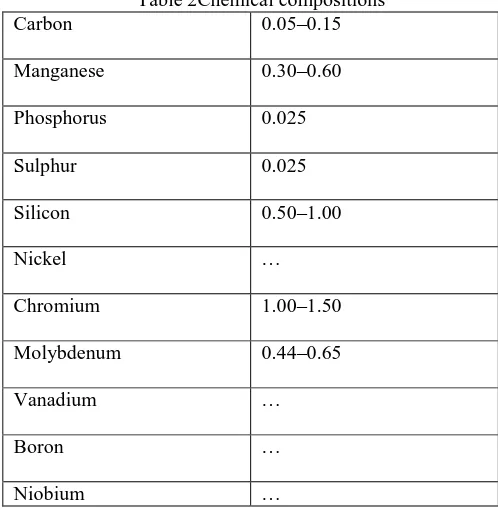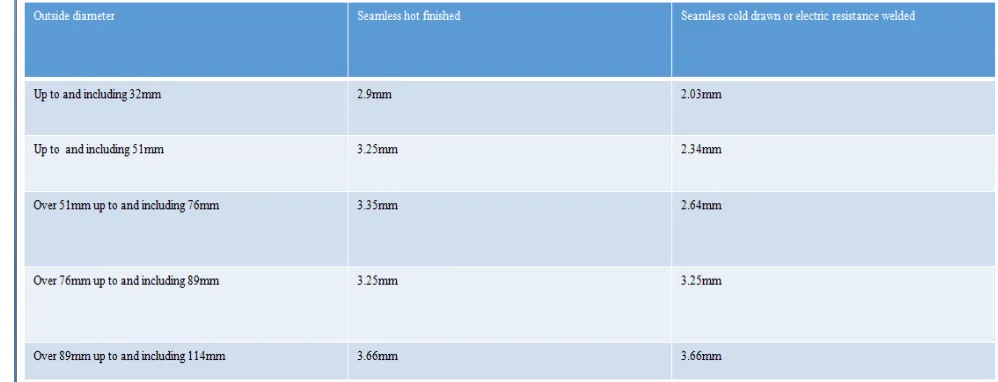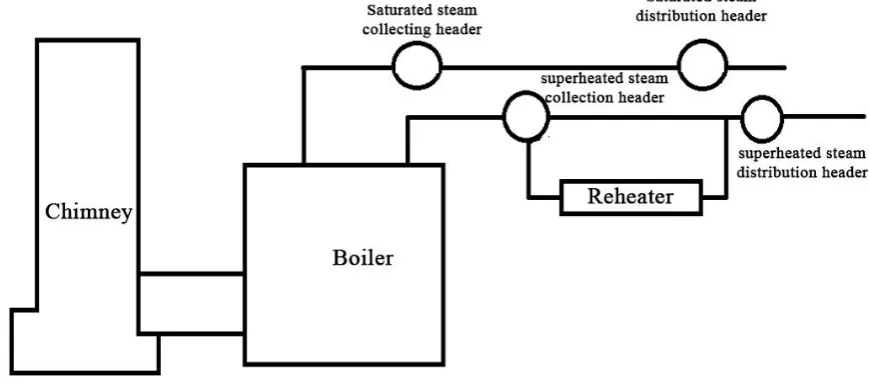Design of Reheater for Superheated Steam in
Water Tube Boiler
Vinu V T
1, Javare Gowda
2,
Dr S Sankar
3P.G. Student, Department of Mechanical Engineering, NCERC Trissur, Kerala, India 1 Professor, Department of Mechanical Engineering, NCERC Trissur, Kerala, India2 Head of Department, Department of Mechanical Engineering, NCERC Trissur, Kerala, India3
ABSTRACT: Boiler, also known as steam generator, is a closed vessel in which water is converted into steam above the atmospheric pressure by the application of heat. The steam generating unit is defined as "A combination of apparatus for producing, recovering heat together with the apparatus for transferring the heat.,A water tube boiler is a type of boiler in which water circulates in tubes heated externally by the fire. Fuel is burned inside the furnace creating hot gases which heats water in the steam generating tubes. In this project water tube boiler is kept under study and problem of steam venting is identified. A system is to be developed in order to avoid the situation by heating the steam externally.33 tone/ hour capacity water tube boiler is kept under study. As per the design 24 tone/hour saturated steam and 9 tone/hour superheated steam is produced. The pressure conditions are 25 bar and 19 bar respectively. The temperature of saturated steam is 225℃ and superheated steam is 330℃. The correct temperature of superheated steam is maintained only when the load conditions (24:9) are satisfied. When the demand of saturated steam is reduced superheated steam doesn’t get correct temperature. Presently in this situation in order to maintain correct temperature of superheated steam some quantity of saturated steam is vented out. When this situation occurs temperature of superheated steam is reduced to 250℃ . Average 4 to 5 tone steam is vented in an hour. Cost of steam is around Rs3500/ tone, In order to avoid the situation of steam venting and to attain the proper temperature of superheated steam a reheater for superheated steam is designed and it is analyzed using ANSYS software. Also study about boilers is conducted. From the ANSYS analysis get the output temperature of steam is 340℃ , which satisfies our demand. And from the cost estimation it is proved that the system is economical.
KEYWORDS: Text detection, Boiler, Reheater, Design, superheated steam I. INTRODUCTION
Boiler, is a closed vessel in which water is converted into steam by the application of heat. The steam generating unit is defined as "A combination of apparatus for producing, recovering heat together with the apparatus for transferring the heat. By the middle of eighteenth century boilers were invented. The first boilers were capable of producing steam at a constant low pressure over a considerable period of time and with minimum amount of attention and the engines which used steam could operate at constant speed performing useful work. In those days the designers were confronted with difficulty of obtaining suitable materi. Concurrent with the introduction of steam machinery, coal mining, which until then had been of low production came to the fore, and coal quickly became the fuel for the manufacture of iorn and for steam production.
different types on the basis of different categories. According to flow of water and hot gases boilers classified into fire tube and water tube boiler. In this project the water tube boiler is kept under study.
33 tone/ hour capacity water tube boiler is kept under study. As per the design 24 tone/hour saturated steam and 9 tone/hour superheated steam is produced. The pressure conditions are 25 bar and 19 bar respectively. The temperature of saturated steam is 225℃ and superheated steam is 330℃. The correct temperature of superheated steam is maintained only when the load conditions (24:9) are satisfied. When the demand of saturated steam is reduced superheated steam doesn’t get correct temperature. Presently in this situation in order to maintain correct temperature of superheated steam some quantity of saturated steam is vented out. When this situation occurs temperature of superheated steam is reduced to 250℃ . Average 4 to 5 tone steam is vented in an hour. Cost of steam is around Rs3500/ tone.
In this project in order to avoid the problem of steam venting and to ensure the correct temperature of superheated steam a reheater for superheated steam is designed and it is analyzed using ANSYS software. Running cost estimation is done in order to check whether the system is economical or not.
The work in this paper is divided in two stages. 1) Design of reheater 2) analysis of reheaterT
II. RELATEDWORK
Earlier there are some works are done to improve the efficiency of boiler. Sometimes heat exchngers are used to improve the efficiency. And also works are done to improve the life time of boiler parts. some works are also done to prevent the heat losses in boilers. There are some modification and analysis works done on water tube boilers.
The below shown figures are schematic representation of fire tube and water tube boilers
(a) (b)
Fig. 1. Type of boilers (a) Fire tube boiler (b) Water tube boiler
III.PROBLEM BACKGROUND
steam some quantity of saturated steam is vented out. When this situation occurs temperature of superheated steam is reduced to 250℃ .Average 4 to 5 tone steam is vented in an hour. Cost of steam is around RS 3500/ ton.
IV.EXPERIMENTALRESULTS
The thermal, chemical and physical properties of material are considered and suitable material for the tubes is selected. By considering the thermal properties we are selecting T11 material as the material for our tube. T11 material is commonly used for the super-heated coils. T11 is the material used in the super-heated coils in the boiler under study.
Table 1 describes about properties of T11 material like tensile strength, yield strength, elongation etc. Table 1 Properties of material
Table 2 describes about the chemical compositions of T11 material.
Table 2Chemical compositions Carbon 0.05–0.15
Manganese 0.30–0.60
Phosphorus 0.025
Sulphur 0.025
Silicon 0.50–1.00
Nickel …
Chromium 1.00–1.50
Molybdenum 0.44–0.65
Vanadium …
Boron …
Niobium …
Tensile strength(min) 415Mpa
Yield strength(min) 220Mpa
Elongation 30%
Some physical properties
Thermal conductivity : 33 w/mk Specific thermal capacity : 622 j/kg k Density : 7.76 kg/𝑑𝑚3
V. DESIGNOFREHEATERFORSUPERHEATEDSTEAMINWATERTUBEBOILER
In order to avoid the condition of steam venting, maintain the accurate temperature of superheated steam and to avoid the loss due to steam venting the reheater is designed. The calculations are shown below
Specific enthalpy of superheated steam at 250℃ of 19 bar pressure is 2906.7 KJ/Kg Specific enthalpy of superheated steam at 330℃ of 19 bar pressure is 3084.3 KJ/kg Energy needed to increase the temperature from 250℃to 330℃ = 177.6KJ/kg Energy needed for 9 tone is 1598400 KJ
Fuel used
We are using LPG as fuel in this system. The reasons for using LPG are less time for start-up, availability, no pre heating is required, and quantity of air required is lower than that of other fuels. Calorific value of LPG is 46.1*103 KJ/Kg.
The amount of fuel required to generate 1598400KJ energy = 1598400/ 46.1*103 = 34.672 kg
The amount of fuel required to generate 1598400 kJ is 34.672 kg
Air fuel ratio of LPG by mass = 15.5:1
Mass of air = 34.672* 15.5
=537.416
The equation used K =𝑄𝐿
𝐴∆𝑇 Where K conductivity
Q energy needed in one second L length of heat transfer A area
∆𝑇 change in temprature in kelvin The ∆𝑇 𝑖𝑠 𝑐𝑎𝑙𝑐𝑢𝑙𝑎𝑡𝑒𝑑 𝑓𝑟𝑜𝑚 𝑒𝑛𝑒𝑟𝑔𝑦 𝑏𝑎𝑙𝑎𝑛𝑐𝑒 𝑒𝑞𝑢𝑎𝑡𝑖𝑜𝑛
Q= mcp∆𝑡
As per the existing boiler condition the temperature difference (∆𝑡) between Steam and flue gas is 300℃
By using this ∆𝑡 we can find out the rate of heat addition
Energy needed per second =1598400/3600
M =537.416/3600
=0.14928
Cp =1.005
∆𝑡 = 300℃
Then rate of heat addition = 9.864 Then by equating the energy balance equation
537.416*1.005*9.8*∆𝑡=9000*2.27*80 Then *∆𝑡 =300
From the conductivity equation we are getting Area =134.54 𝑚2 From the equation of area of tube we get total length of the tube =1070.635m (Total length of the furnace is assumed as 3m)
The total number of tubes = 1070.635/3
= 356
Design of tubes
The thickness of boiler tubes can be calculated as per Indian boiler regulation. The outside diameter tube is taken as 40mm, because the outside diameter of superheated coil used in the corresponding boiler is 40mm.
The thickness of tubes can be determined by the following formula W.P =2f(T-C)/(D-T+C)
W.P=working pressure
C=0.75mm for working pressure up to 70kg/𝑐𝑚2
C=0 for working pressure exceeding 70kg/𝑐𝑚2T minimum thickness of tube
The f can be determined by following
a) For integral economiser tubes, the maximum temperature for which part of the element is designed plus 11℃
b) for furnace and boiler tubes, the saturation temperature corresponding to the working pressure plus 28℃
c) For convection super heater tubes, the maximum steam temperature for which the part of the element is designed plus 39℃
d) For radiant super heater tubes the designed maximum steam temperature plus 50
Table 3 Indian boiler regulation 338(b)
By calculating the thickness of tube as per the equation we get only 1.77mm, as per the above table this is not acceptable. As per the table there should be minimum thickness of 3.25mm.Then for the standard size of tube we take thickness of tube as 4mm.
Then, outer diameter of tube =40mm Inner diameter of tube = 36mm
Volume of tube =3.14 ∗ 𝑟2∗ h
= 3769.91𝑚3
For 365 tubes = 1342088.382 𝑐𝑚3
Air fuel ratio of LPG by mass = 15.5:1
Mass of air = 34.672* 15.5
=537.416
Total volume of air = mass of air / density
= 537.416/1.225
= 438.706 𝑚3
Volume of air / second = 121862.7778 𝑐𝑚3/s
T2 =770℃ (existing condition of flue gas inlet)
V2 =3127811𝑐𝑚3
Volume of furnace = volume of tube +volume of air/second
= 4469899𝑐𝑚3
(Length and breadth of furnace is taken as3m and 2.5
Width of the furnace = 59.59 cm
Wall thickness of furnace
The wall of the furnace is to be covered by the refractory brick. The minimum thickness of wall is to be calculated by the equation
K =𝑄𝐿 𝐴∆𝑇
K =3w/mk (thermal conductivity of refractory brick)
Q =444000J/S
A =21.6𝑚2
∆𝑡 =740(difference between flue gas temperature atmospheric temperatures)
L = 0.108m
=10.8cm
The below shown diagram represents the position of reheater in the flow diagram of boiler under study.
Fig schematic representation of position of reheater
VI.CONCLUSIONS
Detail study about the boiler is conducted
Problem of steam venting is identified in water tube boiler under study
Reheater for superheated steam is designed
REFERENCES
1. Suresh babu, R.Latha, B.Praveen, V.Anilkumar, R Ramakumar, S peerullaA study Analysis and Performance of High Pressure Boilers
With Its Accessories. Heat International Research Journal of Engineering and Technology 2, pp. 353 – 359, 2015
2. S.Krishnanunni, Josephkujupaul C, MathuPotti, Ernest Markose Mathew. Evaluation of Heat Losses in Fire Tube Boiler,International
Journal of Emerging Technology and Advanced Engineering, 2,pp.301-305 , 2012
3. Hajee Mohamed Vincent.H.Wilson, Analysis of Boiler Super Heater Tubes from High Flue GasTemperature International Journal of
Innovative Research in Advanced Engineering, 2, pp.1-4, 2012
4. Parit A. N., Tadamalle A. P., and RamaswamyV3Stress and Creep Analysis of Failed Tube of SecondarySuper HeaterConference (AIMTDR
2014) 5th International & 26th All India Manufacturing Technology, Design and Research Thermal December 12th–14th, 2014, IIT Guwahati, Assam, India 207.1-207.6
5. MoniKuntal Bora1,S. Nakkeeran Performance Analysis From The Efficiency Estimation of Coal Fired Boiler International Journal of
Advanced Research 2,pp. 561-574,2014
6. D.Madhav, L.Ramesh, M.Naveen Heat Recovery through Boiler Blow down Tank International Journal of Engineering Trends and
Technology (IJETT) 4 ,pp.1597 – 1600, 2014
7. NishadeviJadeja, SanjaysinhZala, Improved Performance of an Industrial
Packaged Boiler by Use of Economizer, International Journal of Research in Engineering Science and Technology 6, (2017) 996-1004
8. M.M. Rahman, Sukahar1, Hariyono, Prediction of Tube Temperature Distribution Water Tube Boiler of a Coal Fired Power Station,
Journal of Energy & Environment, 1,pp.45-51,2009
9. B. Divya, P. Rajani, Analysis And Improving Of 10TPH Briquette Boiler Efficiency,International Journal of Innovative Research and
11. M. SuriBabu, Dr.B.Subbaratnam, Finite Element Analysis of Steam Boiler Used In Power Plant, SSRG International Journal of Mechanical Engineering (SSRG-IJME) 1, pp.28-35, 20014
12. Acharya Chirag1, Prof.Nirvesh Mehta, Prof.JaspalDabhi, Research paper on Analysis of Boiler losses to improve Unit heat rate of coal



